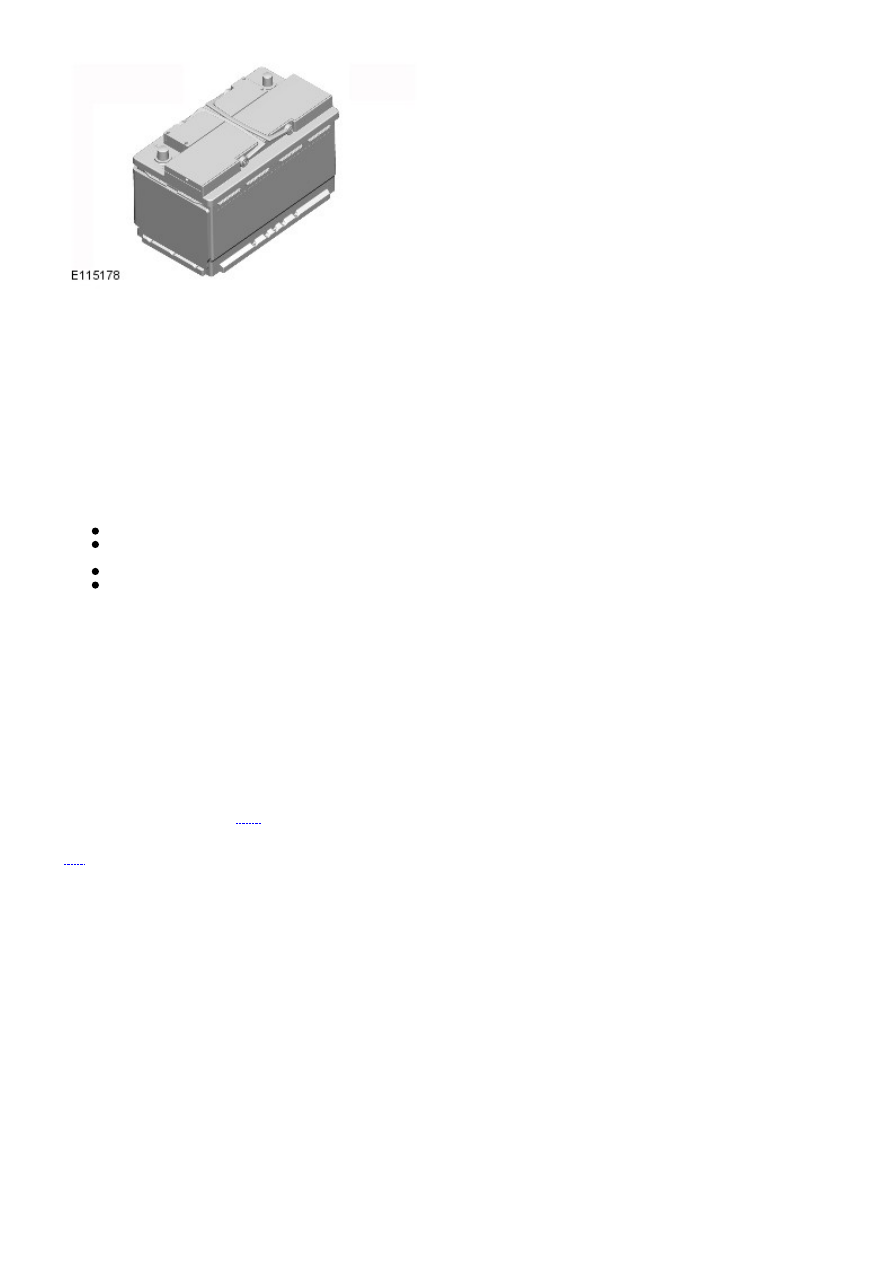Frelander 2. Manual - part 276

Conventional batteries lose their capacity to hold charge overtime as their internal lead plates steadily deteriorate with
the continual vibration and erosion that occurs with normal use. The rate of deterioration depends on a number of factors,
including charge and discharge cycling rates. Therefore the extreme power consumption of a Stop/Start system would have
a detrimental effect on the life-span of this type of battery.
To counteract the deeper discharge and recharge cycles of a Stop/Start system, a high-performance battery based on
Absorption Glass Mat technology has been developed to reduce battery deterioration caused by excessive usage. The
battery owes its success to the ‘absorbent glass mat’ which is a fine fibreglass mat compressed between the lead plates.
The ‘absorbent glass mat’ also absorbs the battery acid, enabling a more efficient use of the cell’s volume.
While the ‘absorbent glass mat’ permits the electrolyte to function normally, it also provides mechanical support for the
lead plates, therefore reducing vibration and subsequent degradation. This technology substantially increases the effective
charge and discharge life of the battery. The battery also has an extremely low internal resistance, resulting in a quicker
reaction between acid and plate material.
Absorption glass mat battery technology offers several advantages:
The battery remains completely spill and leak proof due to the absorption of the fibreglass mat.
In freezing conditions, expanding fluid is unable to cause any damage as the plates are packed in fibreglass mats;
consequently there is virtually no plate movement.
Vibration or shock does not damage the battery.
As electrolyte is contained through the acid in the mat, there is no need for battery maintenance.
The battery's capacity is 80Ah, meaning the battery is theoretically capable of supplying an 80 amp current for one hour. A
typical engine restart will draw a very high current for a fraction of a second, so will have very little impact on the battery's
total state of charge. An engine restart may typically consume about 0.001% of a new battery's full-charge capacity.
If a new battery is fitted to the vehicle, the BMS (battery monitoring system) module will require recalibrating to register
the greater charge holding capacity of the battery, this is performed using Land Rover approved diagnostic equipment. If
diagnostic equipment is not available the BMS module will recalibrate automatically however, this could take 48 hours to
complete depending on vehicle usage. The Stop/Start system will not function correctly until the BMS module is
recalibrated.
If the BMS module is replaced the module will recalibrate automatically; for additional information refer to the Battery
Monitoring System section, below.
CONTROL DIAGRAM
New software added to the
ECM
controls the operation of the Stop/Start system where in addition to its own dedicated
components the Stop/Start system encompasses many other vehicle systems. Complex technology interconnects these
systems and many of the inputs associated with the Stop/Start system are relayed to the ECM and transmitted via the
CJB
, which has also been upgraded with new software. The control logic for inhibiting an engine shutdown during a
Start/Stop cycle resides in the CJB. The CJB also acts as a gateway relaying this information to the ECM over the medium
and high-speed CAN bus networks.
Eight vehicle harnesses have been modified to accommodate the Stop/Start system.
Stop/Start Control Diagram
• NOTE: A = Hardwired; D = High Speed CAN bus; N = Medium Speed CAN bus; O = LIN bus; AC = Diagnostic Link.